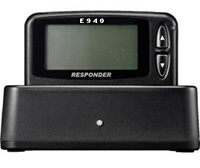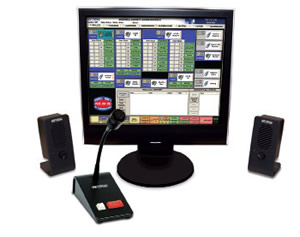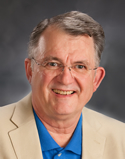BloostonLaw Telecom Update Published by the Law Offices of Blooston, Mordkofsky, Dickens, Duffy & Prendergast, LLP [Portions reproduced here with the firm's permission.] www.bloostonlaw.com |
| Vol. 14, No. 7 | February 16, 2011 |

INSIDE THIS ISSUE - FCC releases text of NPRM to “reform” high-cost support, access revenue stream.
- NTCA members debate
USF plan with Blair Levin.
- FCC unveils two-part agenda for March 3 open meeting.
- Does Egypt owe its revolt to Facebook and the Internet?
- Obama pledges $18 billion to expand mobile broadband access.
|
FCC Releases Text Of NPRM To “Reform” High-Cost Support, Access Revenue Stream The FCC last week released the 289-page text of its Notice of Proposed Rulemaking (NPRM) and Further NPRM that proposes to transform high-cost Universal Service Fund (USF) support for voice service into a Connect America Fund (CAF) for broadband services, and eliminate access charges altogether or replace them with some form of transitional CAF support (BloostonLaw Telecom Update, February 9). As we noted last week, there are serious concerns that the ultimate impact (if not purpose) of the FCC plan is to redistribute high-cost support away from RLECs that have used it efficiently and effectively to deploy broadband to larger price cap and wireless carriers, as well as public-private partnerships. BloostonLaw is in the process of positioning its clients to overcome what is clearly a major threat to the rural telecommunications industry. NPRM/FNPRM: In general, the FCC will be guided by four principles: (1) modernization of the Universal Service Fund (USF) and intercarrier compensation (ICC) for broadband service; (2) fiscal responsibility; (3) accountability; and (4) market-driven policies. The Commission says it will avoid sudden changes or “flash cuts.” The new Connect America Fund (CAF) will ultimately replace all explicit support currently provided by USF and implicit support provided by ICC. The NPRM outlines both short-term and long-term proposals for USF and ICC reform. Universal Service Fund
Regarding the USF, the FCC proposes that short-term reforms would begin in 2012, and that this would involve transitioning USF funds from “less efficient” to “more efficient” uses (e.g., broadband). The Commission believes that the three current USF support mechanisms for rate of return (RoR) carriers—High Cost Loop (HCL), Local Switching Support (LSS), and Interstate Common Line Support (ICLS)—provide poor incentives for RoR carriers to operate and invest efficiently. This contributes, the Commission believes, to excessive spending in one community, which limits opportunities for consumers in other communities, and may not be in the best interests of the nation. The Commission says there are few, if any, benchmarks for determining whether network investment is justified or appropriate. In brief, the FCC believes that LSS provides perverse incentives for companies not to realize efficiencies by combining service areas. The FCC seeks comment on a “suite of reforms” to increase accountability and start RoR carriers on the path towards market-driven, incentive-based regulation. Specifically, the FCC outlines the following proposals/concerns: - Reduce current HCL funding to distribute funds in a more efficient manner among rural carriers
- Most funding goes to companies that have accelerated network upgrades
- This has created a “rural-rural divide” (i.e., that RoR carriers have elected to invest in network upgrades necessary to deploy broadband, while much more powerful price cap carriers have shown little interest in doing so).
- Phase out LSS, or alternatively combine LSS and HCL.
- Set “benchmarks.” for reimbursement of capital and operating expenses.
- Require carriers in the continental US to justify support over $250 per line per month ($3K/yr.).
- Streamline the study area waiver process to eliminate barriers to consolidation.
- Eliminate the “parent-trap” rule to provide greater incentives to upgrade unserved areas.
- Phase-out Interstate Access Support (IAS) received by Price Cap carriers over a period of “a few years.”
- Eliminate the “identical support rule.” and support to CETCs over a “several-year period.”
The FCC intends to begin implementation of the CAF in 2012, using the savings from the current programs outlined above, and seeks comment on the appropriate size of existing USF Programs. It also intends to use data from the National Broadband Map to identify areas that currently lack broadband services. Thus, the FCC seeks comment on the following: - Defining the service obligation as 4Mbps down/1 Mbps up, or some other metric.
- Providing $500M to over $1B in 2012 to award CAF funding through a reverse auction process to serve the identified “unserved” areas. (Note: This implies that the FCC envisions first year reductions to current programs of $500M to $1B).
- If the auction winner is not the incumbent, that the carrier of last resort (COLR) would be able to retain current USF through a transition period.
- If the winner is the incumbent, the new CAF funding would supplement existing USF through a transition period.
- Implement specific measures to ensure accountability and better track performance of the Fund as a whole (i.e., USF and CAF).
- Adopt performance goals and measures for the Fund.
- Adjust reporting measures for Fund recipients including “certain financial information regarding operations,” and “pricing information to ensure that rural areas are comparable to urban.”
- Adjust certification and audit procedures to reflect updated public interest requirements, including the requirement to deploy broadband.
Long Term USF Reforms
The FCC would transition all remaining high-cost programs to the CAF, and seeks comment on three options for providing “sufficient, but not excessive” high-cost support: (1) award all ongoing support through a competitive, technology-neutral bidding mechanism; (2) offer the incumbent local exchange carrier (ILEC) a right-of-first-refusal to serve as COLR in return for receipt of CAF support determined by a proxy model; or (3) if the ILEC refuses, the FCC would hold an auction. Intercarrier Compensation
The FCC’s rulemaking covers the following topics: - Short Term Immediate Reforms
- Access stimulation
- Carriers with revenue-sharing arrangements must refile tariffs
- RoR – Adjust rate to reflect new demand
- CLEC – Benchmark to large ILEC
- Phantom traffic
- Amend signaling rules to require adequate billing data.
- Determine obligations for interconnected VoIP traffic.
- Long Term Comprehensive Reform
- Adopt a sustainable long term framework to reduce per-minute charges.
- Seeks comments on several aspects of ICC rate reductions.
- Federal/State role options
- Federal does interstate, states do intrastate, or
- Federal uses 251/252 rules to unify all ICC under reciprocal compensation.
- Sequencing
- Should state and interstate move together, or
- Should state move to interstate, and then interstate to ultimate levels.
- Glide path to take all ICC to zero, with all explicit support coming from CAF.
Staff members of the Federal-State Joint Board on Universal Service have also posted a number of alternative reform scenarios on the National Association of Regulatory Utility Commissioner (NARUC) website, including the “Consultants’ Plan,” the “Omaha Plan,” and the “Shifman Plan.” BloostonLaw contacts: Ben Dickens, Gerry Duffy, and Mary Sisak. NTCA Members Debate USF Plan With Blair Levin The National Telecommunications Cooperative Association (NTCA) reports that two of its members —Delbert Wilson, general manager of Hill Country Telephone Cooperative (Ingram, Texas), and Randy Houdek, general manager of Venture Communications Cooperative (Highmore, S.D.) — participated in a point-counterpoint discussion with Blair Levin, the leading author of the National Broadband Plan (NBP), at NTCA’s annual meeting in Dallas, Texas. According to NTCA, Levin predicted that the discussions surrounding universal service (USF) reform, put forward by the NBP and now as part of the FCC’s recently issued notice of proposed rulemaking (NPRM), would either result in broad industry consensus or a stalemate. He said the NPRM changed some portions of the NBP for the better, although he also noted that some changes from the NBP made the FCC’s intent unclear to him. In response to Levin’s assertion that the system must be transitioned for the broadband environment to prevent circumstances where companies receive tens of thousands of dollars in per line USF support, Houdek noted that such examples are highly unusual, and a “more realistic example” of how the program works would be found in a company like his own: Venture Communications’ service area is 8,000 square miles—the approximate size of Rhode Island and Delaware—and he receives $220 dollars per line of support per year, NTCA said. It noted that Wilson and Houdek outlined the potential harmful impact of certain of Levin’s proposals on jobs, service quality and future broadband deployment in rural America. Houdek pointed out that South Dakota policy-makers viewed the potential consumer harms so problematic that the public utilities commission chose to engage in the debate at the national level, NTCA said. The association noted that Wilson emphasized that when determining what speeds should be funded by the reformed support mechanism, policy-makers should follow the law, which mandates “comparable speed” as codified in the 1996 Telecommunications Act. To offer evidence of their efficiency and the effectiveness of existing mechanisms, he noted that rural telcos’ receipt of support from the federal universal service fund has increased by an average of only three percent per year in the past five years, while rural companies have increased their broadband footprint from 70% to 92% over that same time, NTCA said. Regarding expanding the base of contributors to the USF fund as it transitions to a Connect America Fund (CAF), Wilson stated that anyone who uses the network and benefits from it should be paying for that use, with Houdek noting that the nation’s voice network is the best in the world because those who use it, paid for it, NTCA said. Levin acknowledged that expanding the contribution base does pose an interesting question, but said that it should be the next step in the debate, once policy-makers have established a “more rational” distribution system, NTCA said. In closing, NTCA said, both Wilson and Houdek voiced concern that the NBP plan was too experimental and full of “ifs,” with Houdek noting that if Levin’s assumptions are wrong, there is a risk an entire infrastructure will be destroyed. He urged the FCC to be cautious in how it approaches reform going forward. Levin, on the other hand, challenged rural companies and their advocates to come forward with specific proposals that would achieve the objectives they sought in reform while also addressing in a practical way the broader need to achieve universal broadband nationwide, NTCA said. Former FCC commissioner Harold Furchtgott-Roth joined the stage following the debate to engage in a one-on-one discussion with Levin that explored underlying economic and legal questions of the FCC proposals. Furchtgott-Roth noted reform solutions don’t necessarily come from Washington, but that ultimately it is how well rural telcos meet the demands of their customers. He noted the importance of grounding USF reform policies in the law, noting the NBP “doesn't begin with ‘what does the law say and where do we want to go from here,’ but rather asserts,’ this is where we want to be, now how can we shoehorn the law to fit that plan?” Levin responded that rural providers needed, however, to look to other business opportunities and models, including some laid out in the NBP, to build cases for sustainable operations in their serving areas. BloostonLaw contacts: Ben Dickens, Gerry Duffy, and Mary Sisak. FCC Unveils 2-Part Agenda For March 3 Open Meeting Variety of Tribal Items Join Retransmission Consent, Lifeline/Linkup, Video Issues The FCC has announced that its March 3 open meeting will be in two parts—the first dedicated to communications issues affecting Native Nations, and the second to other Commission business. The tentative schedule of items on the meeting agenda are as follows: I. NATIVE NATIONS Native Nations Spectrum NPRM: A Notice of Proposed Rulemaking to explore a range of recommendations to help close the wireless gap on Tribal Lands. Tribal and Rural Radio Orders and FNPRM: Orders revising rules or establishing waiver standards that will make it easier for Native Nations to provide radio service to areas that are the functional equivalent of Tribal Lands and to Tribal Lands that are small or irregularly shaped. A Further Notice invites additional comment on adopting a Tribal Bidding Credit and alternative ways to foster radio service by Native Nations on their lands. Also, an order adjusting policies for determining whether proposed new radio stations or station moves constitute an equitable distribution of radio service under Section 307(b) of the Communications Act. Omnibus NOI on Improving Communications Services for Native Nations: A Notice of Inquiry that explores ways to overcome the barriers to deployment of communications services to Native Nations communities, and to improve consultation and coordination with Native Nations. II. OTHER COMMISSION BUSINESS NPRM to Streamline and Clarify the Commission’s Rules Governing Retransmission Consent: A Notice of Proposed Rulemaking that seeks comment on changes to rules governing or affecting retransmission consent negotiations between broadcasters and multi-channel video programming distributors. Lifeline/Link Up Reform and Modernization NPRM: A Notice of Proposed Rulemaking proposing to reform the Universal Service Fund’s Lifeline and Link Up programs to eliminate waste, fraud, and abuse; improve program administration, accountability, and fiscal responsibility; and modernize the program in light of market and technology changes, including to support pilot programs for broadband adoption. Advanced Communications Services NPRM: A Notice of Proposed Rulemaking that seeks comment on rules implementing provisions of the Twenty-First Century Communications and Video Accessibility Act of 2010 (CVAA). The NPRM proposes rules requiring providers of advanced communications services and manufacturers of equipment used for those services to make their products accessible to people with disabilities. Video Description NPRM: Also implementing the CVAA, this Notice of Proposed Rulemaking proposes to reinstate the video description rules adopted by the Commission in 2000, as directed by Congress. Given the ambitious schedule, it is not clear whether all items will make the final cut for the meeting agenda. BloostonLaw contacts: Hal Mordkofsky, Ben Dickens, Gerry Duffy, and John Prendergast. Does Egypt Owe Its Revolt To Facebook & the Internet? If you heed the opinions of the Wall Street Journal, the Huffington Post, and various bloggers and journalists, the Egyptian Revolution was really a “Facebook Revolution” that demonstrated how the Internet and social media could bypass the traditional press and bring down governments in Tunis and Cairo. And Egypt had its own Paul Revere in the form of a Google marketing executive named Wael Ghomin, who started it all last June, when Khaled Said, a young Egyptian businessman was beaten to death by the police. Gordon Crovitz noted in WSJ that “Said had angered the police officers by copying video they had made of themselves divvying up confiscated marijuana, which later appeared on YouTube. Like the young Tunisian who set himself on fire after being harassed by a low-level government official, Said hoped to draw attention to official corruption.” Crovitz then noted that Mr. Ghomin subsequently created a Facebook page titled “We are all Khaled Said,” depicting pictures of Said in the morgue, and the page soon drew 500,000 visitors. The page was then used to attack corruption in general, and to organize protests, according to Crovitz. All of this, of course, came to a head in late January and early February. Mr. Ghomin, who was based in Dubai, eventually went to Egypt, was arrested, and imprisoned for 12 days. After his release, he was interviewed by CNN, and the interview was also published in the Huffington Post: “This revolution started online. This revolution started on Facebook. This revolution started [...] in June 2010 when hundreds of thousands of Egyptians started collaborating content. We would post a video on Facebook that would be shared by 60,000 people on their walls within a few hours. I've always said that if you want to liberate a society just give them the Internet. [...]” Crovitz also quotes Ghomin: "I'll call it Revolution 2.0," and says Google also played a role. “After the Internet was cut off by the Egyptian government, Google created Speak2Tweet, allowing Egyptians to leave voice messages that were posted to Twitter,” Crovitz writes in his February 14 WSJ article, “Egypt’s Revolution by Social Media.” Jon Jensen, writing for GlobalPost, noted that Abdel Rahman Faris, a leader of the Egyptian Revolutionary Youth Council said that his group began planning a solidarity protest for Khaled Said for early 2011. They never had any idea of reaching, much less taking over, Tahrir Square. The Council deliberately chose Egypt’s national Police Day—Jan. 25—to publicly disdain rather than commemorate a security force marked by a long history of brutality and human rights abuses, Jensen wrote. “But none of them envisioned that their plans would eventually spark the largest popular uprising in Egypt's modern history. The group used a combination of coordinated tactics — including the use of Facebook and Twitter — to deceive state security forces regarding their intentions.” They didn’t use their mobile phones, and even took the batteries out, because they knew the police could track them even If the phones were turned off, Jensen said. But discussions on National Public Radio and various blogs point out that only a small percentage of Egypt’s 80-plus million people have access to the Internet and social media. When the Mubarak government succeeded in shutting down the Internet for a brief period, the old media managed to rally. Even though many of its in-country facilities had been either confiscated or destroyed, Al Jazeera was able to broadcast images of the protests via its satellite facilities. Thus, many believe that while the new media provided the spark for the Egyptian revolution, the old media, led by Al Jazeera, delivered the coup de grace by reporting that the genie had been let out of the bottle. Implications elsewhere: While there have been demonstrations in Yemen and Iran, they are not expected to have the same results as those in Egypt, at least not in the near term. But the Internet has given many governments cause for concern. In WSJ Asia, Loretta Chao reports that despite China’s massive Web censorship efforts, information on Egypt managed to filter through. She said that on Chinese Twitter-like microblogging services, discussions of the Egyptian uprising were partly hidden, with searches for "Egypt" returning messages saying results couldn't be found or couldn't be displayed, a mechanism commonly used by Chinese websites to comply with censorship orders. Chao reported that almost all microblogging services/social networking sites have set their filtering criteria to blocking results for "Egypt" or "Mubarak," in Chinese, from their search functions. Still, Chao said, some Internet users were able to post comments about Egypt on their microblogs and also managed to exchange comments, evading the filter by replacing the characters in Mubarak's Chinese name with similar-sounding characters. They pondered how soon an uprising of the same magnitude could happen in China, she added. China's population of Internet users is now the world's largest, and social-networking tools such as microblogging are increasingly popular and have significantly accelerated the spread of information, including from nongovernment sources, Chao said. It is widely expected that Chinese authorities carefully monitor any signs of unrest on the Internet, especially social-networking websites, and openly acknowledge the threat that the Internet poses to their authoritarian rule. Facebook, of course, is blocked in China. And during his interview with CNN, when Mr. Ghomin was asked where the next revolution would occur, he responded: “Ask Facebook.” At the very least then, the events in Egypt should be a cautionary tale for authoritarian governments who fail to understand the power of the Internet and social media. As for the telecom industry, it should be a cautionary tale about being careful what you wish for. Vodafone was at the mercy of the Mubarak government and concerned about the safety of its employees during the protests. Any company dealing with an authoritarian regime faces similar risks. On the other hand, the Egyptian Revolutionary Youth Council took the batteries out of their cell phones because they knew that was an old technology. Maybe Facebook and Twitter are outdated because there is already a next-generation social media technology on the drawing board? At our deadline: Secretary of State Hillary Clinton announced a new U.S. policy to address Internet freedom. As reported in the New York Times, Clinton unveiled the policy at a speech at George Washington University: ““The United States continues to help people in oppressive Internet environments get around filters, stay one step ahead of the censors, the hackers and the thugs who beat them up or imprison them for what they say online.” She said the U.S. supports multiple tools, “so if repressive governments figure out how to target one, others are available. And we invest in the cutting edge because we know that repressive governments are constantly innovating their methods of repression.” The State Department plans to finance programs like circumvention services, which enable users to evade Internet firewalls, and training for human rights workers on how to secure their e-mail from surveillance or wipe incriminating data from cellphones if they are detained by the police, according to the NYT. The department has also inaugurated Twitter feeds in Arabic and Persian, and soon will add others in Chinese, Russian and Hindi. BloostonLaw contacts: Hal Mordkofsky, Ben Dickens, Gerry Duffy, and John Prendergast. OBAMA PLEDGES $18 BILLION TO EXPAND MOBILE BROADBAND ACCESS: In a speech at Northern Michigan University in Marquette, Mich., last week, President Obama committed to spending $18 billion in federal funds to expand mobile broadband access in the U.S., echoing FCC and Commerce Department goals. "We can't expect tomorrow's economy to take root using yesterday's infrastructure,'' Obama said, "To attract the best jobs and newest industries, we've got to out-innovate, out-educate, out-build, we're going to have to out-hustle the rest of the world. That means investing in cutting-edge research and technology." As noted by FierceWireless, in his State of the Union address in January, Obama pledged to expand high-speed wireless access to 98 percent of all Americans within five years. To get there, the administration is proposing to have government agencies auction off their spectrum and use spectrum more efficiently, as well as get TV broadcasters to engage in voluntary incentive auctions. The administration said that those efforts will raise an estimated $27.8 billion and contribute to lowering the federal deficit by $9.6 billion. FierceWireless noted that the administration did not outline how much money will be given back to broadcasters. So far, broadcasters have been relatively cool to the idea, which was proposed in the FCC's National Broadband Plan and is part of an effort to free up 300 MHz of spectrum within the next five years and 500 MHz within the next decade. As FierceWireless noted, the administration said the auctions could offset the $10.7 billion it wants to spend on a nationwide, interoperable public-safety broadband network. The administration also wants a one-time $5 billion investment from the Universal Service Fund to expand access to high-speed wireless service in rural areas, and $3 billion for research and development of emerging wireless technologies and applications. PRESIDENT SUBMITS $354.2 MILLION BUDGET FOR FCC FOR FY 2012: The President has submitted a budget to Congress that proposes fiscal year 2012 funding for the Federal Communications Commission of $354.2 million. The requested FY 2012 funding level would include: implementing the National Broadband Plan, a roadmap for economic growth and American competitiveness in the 21st century; overhauling the Commission’s data systems and processes, to streamline the FCC and make it even more effective; continuing to modernize and reform the FCC; strengthening the audit and investigation function of the Office of the Inspector General; and supporting the Commission’s public safety and cyber-security roles. The request would also provide funds to cover mandatory inflationary increases for contractual services. Of interest to clients is that the President proposes to provide no new funds for the Telecommunications Development Fund (TDF), which was created in 1996 with the objective of providing access to capital to small businesses, enhancing competition in the telecommunications industry, and improving telecommunications in rural areas. TDF receives interest earnings from deposits on spectrum auctions, and invests a portion of these earnings in small telecommunications firms and uses the rests for administration costs. The complete copy of the Commission’s FY 2012 budget submission is available on the FCC’s Web site at: www.fcc.gov. BloostonLaw contacts: Hal Mordkofsky, Ben Dickens, Gerry Duffy, and John Prendergast. HOUSE PANEL TO GRILL FCC ON NET NEUTRALITY RULES: The House Energy and Commerce Subcommittee on Communications and Technology, chaired by Rep. Greg Walden (R-OR), held a hearing on Wednesday, February 16, 2011. The five commissioners of the FCC testified about the controversial network neutrality rules that put the Commission in charge of how networks are managed, how technology partnerships are formed, and how the private sector invests in communications to provide new services and options to consumers. Members of the committee questions concerning whether Network Neutrality and Internet Regulation is warranted, or will it cause more economic harm than good? Initial reports indicate that the Commissioners largely focused on their existing justification for their policy. BloostonLaw contacts: Ben Dickens, Gerry Duffy, and Mary Sisak. PUBLIC SAFETY BROADBAND INTEROPERABILITY FORUM SET FOR MARCH 4: The FCC’s Public Safety Homeland Security Bureau’s (PSHSB’s) Emergency Response Interoperability Center (ERIC) will host an Interoperability Forum on Friday, March 4, 2011, from 9:00 a.m. to 3:30 p.m. The forum will be held in the Commission Meeting Room at FCC Headquarters, located at 445 12th Street, SW, Room TW-C305, Washington, DC 20554. The forum will garner input on the technical framework for the nationwide public safety mobile broadband network to ensure nationwide interoperability. This network must be technically compatible and fully interoperable from the first day of network deployment in order to serve as the nationwide broadband network envisioned for America’s first responders. The forum will focus on: - Ensuring nationwide interoperability for public safety broadband utilizing 4G technology;
- Solutions for the deployment of Radio Access Network (RAN) equipment to achieve nationwide operability and interoperability; and
- Core network, security and services
The finalized agenda and list of panelists will be released closer to the event date. The workshop will be open to the public; however, registration will be limited to the seating available. Those individuals who are interested in attending the forum may preregister online at http://www.fcc.gov/pshs/event-registration.html. Those who pre-register will be asked to provide their name, title, organization affiliation, and contact information. Individuals may also contact Deandrea Wilson at Deandrea.Wilson@fcc.gov or 202-418-0703 regarding pre-registration. The deadline for pre-registration is Wednesday, March 2, 2011. Interested parties may file comments using the Commission's Electronic Comment Filing System (ECFS) or by filing paper copies. BloostonLaw contacts: Hal Mordkofsky, John Prendergast, and Richard Rubino. This newsletter is not intended to provide legal advice. Those interested in more information should contact the firm. |

















 Microsoft Corporate Vice President for Trustworthy Computing Scott Charney,
Microsoft Corporate Vice President for Trustworthy Computing Scott Charney, 










































